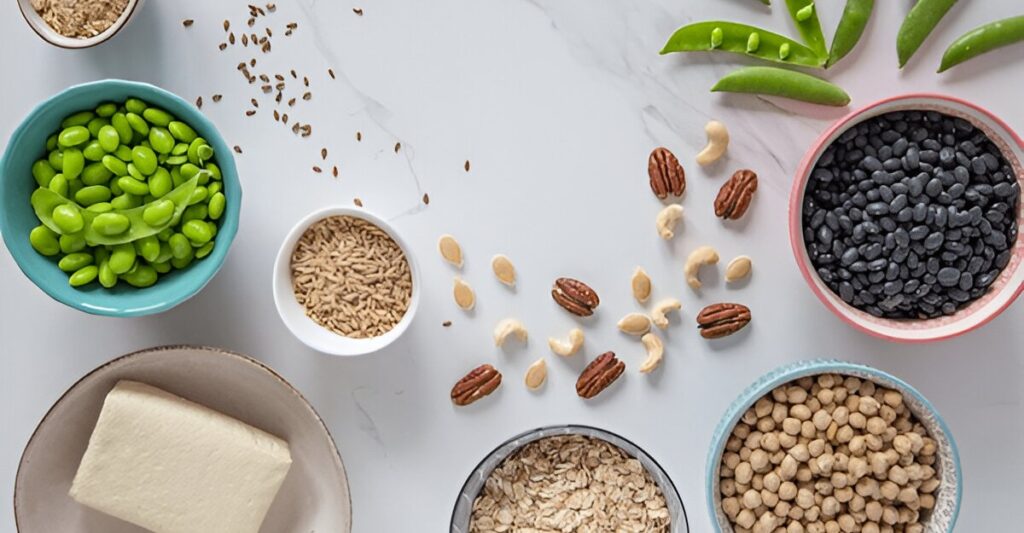Continuous glucose monitors (CGMs) aren’t just for people with diabetes—they’re becoming a powerful tool for anyone looking to optimize their diet and health. By tracking blood sugar in real time, CGMs offer personalized insights into how food, exercise, and lifestyle affect your body. This article explores how to use continuous glucose monitors for diet insight, helping you make smarter food choices to stabilize blood sugar, enhance energy, and support long-term wellness.
What Is a Continuous Glucose Monitor?
A CGM is a wearable device that measures glucose levels in your interstitial fluid every few minutes, providing a detailed picture of how your blood sugar fluctuates throughout the day. Unlike traditional finger-prick tests, CGMs offer continuous data, often synced to an app for easy tracking.
By understanding how to use continuous glucose monitors for diet insight, you can identify which foods spike your blood sugar, how stress or sleep impacts glucose, and what dietary tweaks can improve your metabolic health.
Why Use a CGM for Diet Insight?
Blood sugar isn’t just a concern for diabetics—it affects everyone’s energy, mood, weight, and risk of chronic diseases like type 2 diabetes. Spikes and crashes in glucose can lead to fatigue, cravings, and inflammation. A CGM helps you:
- Pinpoint Food Triggers: Discover which foods cause rapid glucose spikes or prolonged elevations.
- Optimize Meal Timing: Learn how the order or timing of meals affects blood sugar.
- Personalize Your Diet: Tailor your eating plan to your unique metabolic response, rather than following generic advice.
- Improve Energy and Focus: Stable blood sugar supports consistent energy and mental clarity.
A 2021 study in Nutrients found that personalized nutrition based on CGM data improved glycemic control and reduced post-meal glucose spikes, even in non-diabetics. Let’s dive into how to use continuous glucose monitors for diet insight effectively.
Getting Started with a CGM
To begin, you’ll need a CGM device, such as those from Dexcom, FreeStyle Libre, or Levels. Some require a prescription, while others are available directly to consumers. Here’s how to set up:
- Choose a Device: Research options based on cost, app integration, and wear time (typically 7-14 days per sensor).
- Apply the Sensor: Most CGMs are small patches applied to your arm or abdomen, with a tiny needle that inserts under the skin.
- Sync to an App: Connect the CGM to your smartphone or a dedicated reader to track data in real time.
- Consult a Professional: If you’re new to CGMs, work with a dietitian or doctor to interpret data, especially if you have health conditions.
How to Use Continuous Glucose Monitors for Diet Insight
Once your CGM is set up, follow these steps to gain diet insights:
1. Establish a Baseline
Wear the CGM for a few days without changing your diet to understand your typical glucose patterns. Note:
- Fasting Glucose: Morning levels before eating (ideally 70-100 mg/dL for non-diabetics).
- Post-Meal Peaks: Glucose typically rises 30-60 minutes after eating, ideally staying below 140 mg/dL.
- Daily Fluctuations: Look for stability versus frequent spikes or dips.
Tip: Keep a food log alongside CGM data to correlate meals with glucose responses.
2. Test Specific Foods
Experiment with different foods to see how they affect your blood sugar. Try:
- Carbohydrates: Compare simple carbs (white bread, soda) to complex carbs (quinoa, sweet potatoes).
- Protein and Fats: Test how adding protein (chicken, eggs) or fats (avocado, olive oil) to carbs alters glucose spikes.
- Portion Sizes: See how larger or smaller servings impact your response.
Example: Eat a slice of white bread one day and a slice of whole-grain bread the next. Check how each affects your glucose peak and recovery time.
3. Experiment with Meal Timing and Order
The timing and sequence of foods can influence glucose. Test these strategies:
- Eat Protein or Veggies First: Starting with protein or fiber-rich foods can blunt glucose spikes, per a 2015 study in Diabetes Care.
- Space Out Carbs: Avoid eating large carb-heavy meals in one sitting. Spread them across smaller meals.
- Post-Meal Walk: A 10-15 minute walk after eating can lower glucose peaks, per a 2016 study in Diabetologia.
4. Monitor Lifestyle Factors
Glucose isn’t just about food. Use your CGM to explore how these factors affect blood sugar:
- Exercise: Aerobic exercise often lowers glucose, while intense workouts may temporarily raise it.
- Sleep: Poor sleep can elevate glucose, per a 2019 study in Sleep Medicine.
- Stress: Chronic stress increases cortisol, which raises blood sugar.
Tip: Log these factors in your app or journal to spot patterns.
5. Analyze and Adjust
After 1-2 weeks, review your CGM data to identify trends. Ask:
- Which foods cause the biggest spikes?
- What combinations keep glucose stable?
- How do lifestyle factors like sleep or exercise impact my levels?
Based on insights, adjust your diet. For example, if oatmeal spikes your glucose, try pairing it with nut butter or switching to steel-cut oats.
Key Insights from CGM Data
Using continuous glucose monitors for diet insight can reveal surprising patterns. Common findings include:
- Individual Responses Vary: A 2015 study in Cell showed that identical foods (e.g., bananas) cause different glucose responses in different people.
- Carb Quality Matters: Whole grains and fiber-rich carbs tend to cause smaller spikes than refined carbs.
- Protein and Fat Buffer Spikes: Adding protein or healthy fats to meals slows glucose absorption.
- Timing Is Key: Eating carbs later in the day may lead to higher spikes due to circadian rhythms, per a 2020 study in Nature Reviews Endocrinology.
Sample CGM-Friendly Meal Plan
Here’s a one-day meal plan to stabilize blood sugar, based on CGM insights:
- Breakfast: Scrambled eggs with spinach, avocado, and a small serving of berries.
- Snack: Handful of almonds and a slice of cucumber.
- Lunch: Grilled chicken salad with mixed greens, olive oil dressing, and quinoa.
- Snack: Greek yogurt with chia seeds and a few walnuts.
- Dinner: Baked salmon, roasted Brussels sprouts, and a small sweet potato.
Tip: Start meals with veggies or protein to minimize glucose spikes.
Benefits of Using CGMs for Diet Insight
Understanding how to use continuous glucose monitors for diet insight offers numerous benefits:
- Personalized Nutrition: Tailor your diet to your body’s unique responses, avoiding one-size-fits-all plans.
- Better Energy: Stable glucose reduces fatigue, brain fog, and cravings.
- Weight Management: Avoiding glucose spikes may reduce fat storage and hunger, per a 2022 study in Obesity.
- Disease Prevention: Stable blood sugar lowers the risk of type 2 diabetes and heart disease.
Potential Challenges and Solutions
Using CGMs isn’t without hurdles. Here’s how to address them:
- Cost: CGMs can be expensive (often $50-$200 per sensor). Check if insurance covers them or opt for subscription-based programs like Levels.
- Data Overload: Too much information can feel overwhelming. Focus on one variable (e.g., breakfast foods) at a time.
- Skin Irritation: Some experience discomfort from sensors. Rotate application sites and follow manufacturer guidelines.
- Interpretation: Work with a dietitian to decode complex patterns, especially if results are inconsistent.
Common Myths About CGMs and Diet
Let’s debunk some misconceptions:
- Myth 1: CGMs Are Only for Diabetics
CGMs are valuable for anyone seeking diet insights, as blood sugar affects overall health. - Myth 2: All Glucose Spikes Are Bad
Moderate spikes after meals are normal. Focus on minimizing extreme or prolonged elevations. - Myth 3: CGMs Replace Healthy Eating
CGMs provide data, but you still need to prioritize whole, nutrient-dense foods.
Practical Tips for Success
Ready to master how to use continuous glucose monitors for diet insight? Try these strategies:
- Start Simple: Focus on one meal or food group (e.g., carbs) to avoid overwhelm.
- Log Everything: Record meals, exercise, sleep, and stress alongside CGM data for context.
- Make Gradual Changes: Adjust one habit at a time, like adding fiber to breakfast, based on CGM feedback.
- Stay Consistent: Wear the CGM for at least 1-2 weeks to gather meaningful data.
- Review with Experts: Share data with a nutritionist for tailored advice, especially if you’re new to CGMs.
The Science Behind CGMs and Diet
Research supports the value of CGMs for diet optimization. A 2023 study in The American Journal of Clinical Nutrition found that CGM-guided eating reduced post-meal glucose spikes by 20% in healthy adults. Another study in Diabetes Technology & Therapeutics (2022) showed that CGM use improved dietary adherence and metabolic health in non-diabetics. By leveraging these insights, you can fine-tune your diet for better outcomes.
Conclusion
Learning how to use continuous glucose monitors for diet insight is a game-changer for personalizing your nutrition. By tracking how foods, timing, and lifestyle affect your blood sugar, you can optimize your diet to boost energy, manage weight, and reduce disease risk. Start with a CGM, experiment with meals, and use the data to make informed choices that align with your body’s needs.
Take the first step—try tracking one meal’s glucose response or consult a professional to get started. With CGMs, you’re not just eating; you’re eating smarter.
Call to Action: Have you used a CGM or are you curious to try one? Share your thoughts or questions in the comments below!


